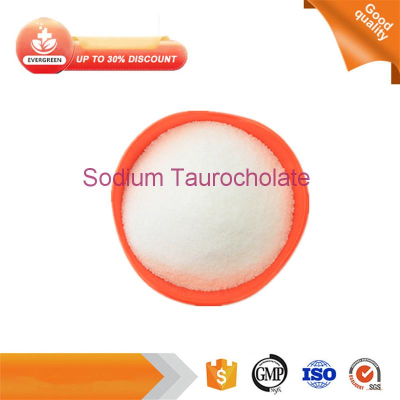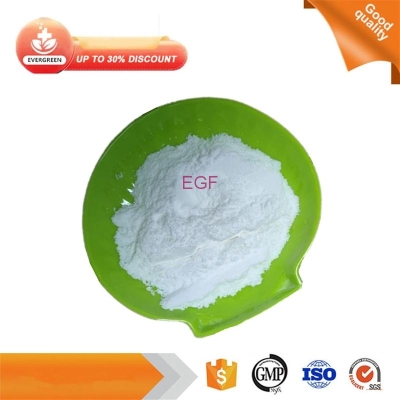-
Categories
-
Pharmaceutical Intermediates
-
Active Pharmaceutical Ingredients
-
Food Additives
- Industrial Coatings
- Agrochemicals
- Dyes and Pigments
- Surfactant
- Flavors and Fragrances
- Chemical Reagents
- Catalyst and Auxiliary
- Natural Products
- Inorganic Chemistry
-
Organic Chemistry
-
Biochemical Engineering
- Analytical Chemistry
- Cosmetic Ingredient
-
Pharmaceutical Intermediates
Promotion
ECHEMI Mall
Wholesale
Weekly Price
Exhibition
News
-
Trade Service
*For medical professionals to read and reference, please forward it to the department group! China is the "hardest hit area" for liver cancer
.
According to data released by the World Health Organization's International Agency for Research on Cancer (IARC), in 2020, there will be 900,000 new cases of liver cancer worldwide, of which China will account for 46%; the number of deaths from liver cancer worldwide will be 820,000, with China accounting for 47% [1]
.
The 5-year survival rate of advanced liver cancer is not optimistic
.
Standardized diagnosis and treatment is the key to long-term benefit of patients
.
At the 2022 CSCO guideline meeting held on the morning of April 24th, Professor Zeng Zhaochong from Zhongshan Hospital Affiliated to Fudan University and Professor Gong Xinlei from Qinhuai Medical District of Nanjing Jinling Hospital brought us the updated first draft of radiotherapy and systemic therapy for the diagnosis and treatment guidelines for hepatocellular carcinoma.
.
Radiotherapy chapter 2022 CSCO radiotherapy guidelines for hepatocellular carcinoma update the main points, including radiotherapy for small liver cancer, TACE combined with radiotherapy, resectable/unresectable tumor thrombus radiotherapy, surgery combined with radiotherapy, extrahepatic metastasis radiotherapy, and proton external beam and internal radiotherapy
.
1.
Radiotherapy for small hepatocellular carcinoma.
For those who are not suitable for surgery or ablation, or are unwilling to use invasive treatment, SBRT (stereotactic body radiotherapy) can be selected.
SBRT is an effective treatment method, and its survival benefit is comparable to surgical resection or local Ablation therapy is similar (category 1B)
.
2.
TACE combined with radiotherapy After TACE, the deposition of lipiodol is poor, and the lesions with liver mass >5cm can be combined with local radiotherapy to improve the local control rate and prolong the survival period (class 1B evidence)
.
3.
Preoperative neoadjuvant radiotherapy or postoperative adjuvant radiotherapy for resectable/unresectable tumor thrombus can significantly prolong survival (category 1B evidence)
.
Unresectable portal/inferior vena cava tumor thrombus: Palliative radiotherapy may prolong survival (Class 1B)
.
4.
Surgery combined with radiotherapy and bridging radiotherapy before liver transplantation can significantly improve the local tumor control rate, delay disease progression, and reduce the risk of transplant recipients dropping out of transplant surgery (category 2B evidence)
.
Postoperative adjuvant radiotherapy, for hepatocellular carcinoma surgical margins ≤1cm away from the tumor with narrow margins, or positive postoperative margins, or postoperative pathological findings of microvascular invasion (MVI), postoperative adjuvant radiotherapy can reduce local recurrence or Distant metastasis rate, prolong disease-free survival of patients (category 2A evidence)
.
Surgery after radiotherapy downstaging, tumor shrinkage or downstaging after radiotherapy, some patients may obtain the opportunity for surgery and prolong survival (category 2B evidence)
.
5.
SBRT can be performed for some oligometastatic lesions after extrahepatic radiotherapy to prolong survival (category 2B evidence)
.
For bone metastases, brain metastases, lymph node metastases, adrenal metastases, etc.
, radiotherapy can be used to relieve symptoms, delay tumor development, and prolong survival (category 3 evidence)
.
6.
Proton external beam radiation and internal radiotherapy Proton beam radiation therapy (PBT) is similar to radiofrequency ablation for postoperative recurrence or residual liver cancer (category 2B evidence)
.
Internal radiation therapy, including 90Y microsphere therapy, 131I seed implantation, etc.
, can reduce the local recurrence rate and improve patient survival (category 3 evidence)
.
Professor Gong Xinlei pointed out that in the current systemic treatment of hepatocellular carcinoma, the combination therapy based on immunotherapy has become the mainstream
.
At present, more and more drugs and regimens that are suitable for China's national conditions and meet the needs of Chinese clinical practice and patients are emerging.
At the same time, the new version of the guidelines puts more emphasis on and optimizes the treatment recommendations of motherland medicine and traditional Chinese medicine
.
1.
Update points for the selection of first-line treatment strategies for advanced HCC Class 1A evidence)”; add “durvalumab in combination with tremelimumab (class 1A evidence)”; add “apatinib in combination with camrelizumab (class 1A evidence)”
.
Liver function Child-Pugh grade A or better grade B (≤7 points) Grade II expert recommendation: add "acoladine (1B evidence)"; add "modern Chinese medicine preparations with liver cancer indications, such as elemi ene injection/oral solution, Xiaoaiping (Tongguanteng) injection/oral solution, etc.
(Class 2A evidence)”; added “durvalumab (Class 1A evidence)”; deleted “Sorafenib combined with Thaliplatin-based systemic chemotherapy (category 2B)”
.
Liver function Child-Pugh grade A or better grade B (≤7 points) Level III expert recommendation: delete "apatinib combined with camrelizumab (category 2B evidence)"; add "sorafenib combined with Oxaliplatin-based systemic chemotherapy (category 2B evidence)”
.
Liver function Child-Pugh grade B (>7 points) and grade C grade I expert recommendation: add "acoladine (1B evidence)"; add "modern traditional Chinese medicine preparations with liver cancer indications, such as elemene injection / Oral liquid, Xiaoaiping (Tongguanteng) injection / oral liquid, etc.
(Class 2A evidence)”
.
2.
Update points for the selection of second-line treatment strategies for advanced HCC "Nivolumab, Pembrolizumab" was deleted from "-1 mAb", "Tislelizumab" was added, and the text was adjusted
.
Liver function Child-Pugh A or better B (≤7 points) Level II expert recommendation: the evidence level of camrelizumab combined with apatinib is adjusted from "2B evidence" to "2A evidence"; Delete "Sorafenib (not used before) (Class 2B evidence)"; add "Modern Chinese medicine preparations with liver cancer indications, such as elemene injection/oral solution, Xiaoaiping (Tongguanteng) injection/ Oral solutions, etc.
(Class 2A evidence)”
.
Liver function Child-Pugh grade B (>7 points) and grade C grade I expert recommendation: add the specific names of modern Chinese medicine preparations with liver cancer indications "such as elemene injection/oral liquid, Xiaoaiping (Tongguanteng) injection/oral solution, etc.
(category 2A evidence)”
.
Expert Profile Professor Zeng Zhaochong Professor / Chief Physician / Doctoral Supervisor Zhongshan Hospital Affiliated to Fudan University Member of the Standing Committee of the Liver Cancer Professional Committee of the Chinese Medical Doctor Association, CSCO Liver Cancer Professional Committee : Published articles in the Journal of Radiotherapy for Thoracic and Abdominal Tumors: Published more than 100 SCI papers and more than 60 Chinese papers as the first or corresponding author
.
Editor-in-chief of "Clinical Practice of Radiotherapy for Primary Liver Cancer", author of "Consensus for SBRT for HCC from the 7th APPLE" and "Consensus on Radiotherapy for Primary Liver Cancer" in 2016 and 2020
.
He has won 1 second-class national science and technology award and 4 provincial and ministerial science and technology awards
.
Presided over 8 national-level scientific research projects, selected as Shanghai outstanding academic leader and Shanghai leading talent expert profile Chairman, CSCO Liver Cancer Expert Committee, CSCO Smart Medical Expert Committee, CSCO Esophageal Cancer Expert Committee, CSCO Oncology Minimally Invasive Surgery Expert Committee Member of the Treatment Branch Member of the Cancer Chemotherapy and Biotherapy Physician Branch of the Jiangsu Provincial Medical Doctor Association has long been engaged in clinical and scientific research work in medical oncology, and has rich clinical experience in the diagnosis and treatment of digestive system tumors, especially hepatobiliary and pancreatic tumors
.
Participated in a number of provincial, ministerial and military key scientific research projects, participated in more than 100 international and domestic clinical studies of new drugs, published more than 30 scientific research papers in domestic and foreign academic journals, participated in the compilation of 8 academic monographs on medical oncology, and participated in the translation of 2; 1 second prize of the Chinese People's Liberation Army Science and Technology Progress Award and 1 third prize of the Medical Achievement Award, 1 first prize of the Jiangsu Provincial Science and Technology Progress Award, and 1 first prize of the Oncology Medical Science and Technology Award of the Jiangsu Anti-Cancer Association
.







